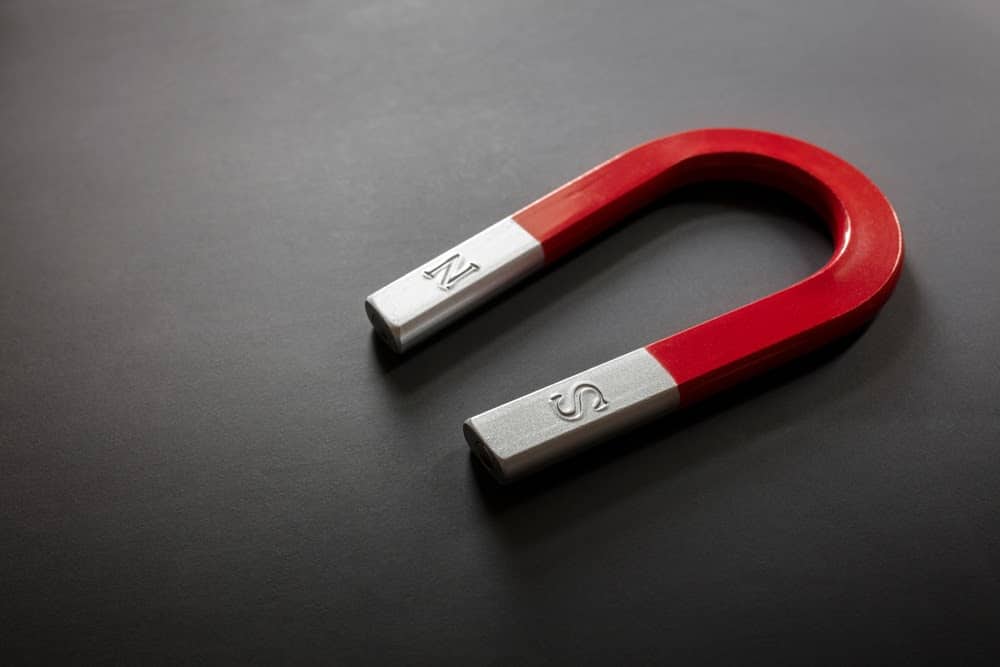One of the questions we hear frequently concerns whether galvanized steel is magnetic, and why or why not. The simple answer is that galvanized steel is magnetic, usually.
Explaining why galvanized steel is almost always magnetic requires that we start with the definition of galvanized steel.
What is Galvanized Steel?
Galvanizing is the process of making steel rust and corrosion resistant by coating it with a very thin layer of zinc. We use a hot-dip galvanizing process where we immerse clean steel in a vat of molten zinc.
Once it is applied to the steel, the thin zinc coating acts as a sacrificial cathode. That just means that zinc gives up electrons more readily than iron. When a corrosive agent that destroys metal by receiving electrons to form chemical compounds attacks galvanized steel, the corrosive element bonds to the zinc rather than to the iron in the steel.
Chemical reactions that would destroy steel sometimes, ironically, make zinc stronger. One example of this is the zinc carbonate that forms on the surface of steel as it reacts with moisture and carbon dioxide in the atmosphere. But neither pure zinc nor weathered zinc is magnetic. So what about the steel beneath it?
Steel is Usually Magnetic.
We all know that iron is magnetic.
The core of the earth is mostly made of molten iron. That is the reason that a compass is so useful for finding magnetic north. It will point to the earth’s magnetic pole.
We all know that steel in household applications is magnetic. Your refrigerator door is made of steel, so you can use refrigerator magnets to hold your notes and pictures.
And, we all know that magnets have something to do with electricity. Either you have seen the giant magnets used in generating electricity from hydropower, or maybe you have seen lighting strike a lightning rod.
Iron conducts electricity and it’s magnetic. And steel is made from iron. So steel is magnetic, right?
Stainless Steel May or May Not be Magnetic
Stainless steel may or may not be magnetic, and can become more magnetic after it has been worked into some kind of useful form. The principle is:
- Martensitic stainless steels are magnetic.
- Austenitic stainless steels are not.
If your reaction to that truth is “Huh?” we understand. Here are the definitions that help make sense of this principle.
Martensitic stainless steels are made from iron with 0.1 to 1.2% carbon and 12 to 17% chromium. They may include some nickel, which allows for adding more chromium, which makes the steel more corrosion-resistant. (Not as corrosion-resistant as galvanized steel, but relatively long-lived.)
Martensitic stainless steels have a microstructure typical of cast iron. Forging them into useful items like stainless steel bowls and surgical stools gives them an even more regular microstructure. It’s the iron microstructure that makes the stainless steel piece magnetic.
Austenitic stainless steels have a different microstructure that makes them easier to use to form objects like springs. They may be forged from a mixture of iron and molybdenum to make them resistant to acids. They are common in cookware, cutlery, and kitchen equipment.
Austenitic stainless steels may also have added nickel. It’s the nickel that makes them non-magnetic.
That can be a very useful quality. For instance, you wouldn’t want your hospital’s MRI machine to be magnetic. That’s why it is made from austenitic stainless steel.
Of course, there’s one important consideration in determining whether galvanized versions of these products would be magnetic. If it’s austenitic stainless steel, no, it would not be magnetic. But usually there is no reason to galvanize austenitic steel.
Questions about Galvanized Steel?
Do you have questions about galvanized steel? We will be happy to answer all your questions about repairing galvanized steel. Call us when we can be of assistance!

